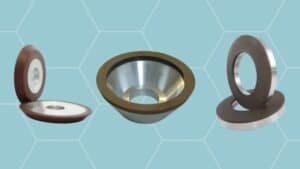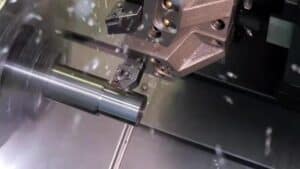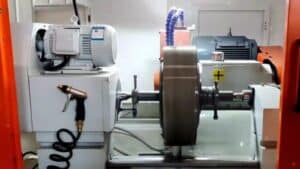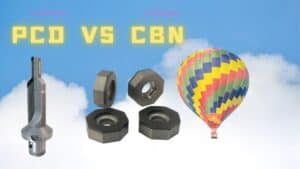What Is Honing?
Honing is a metalworking process used to improve the geometric form of a surface, such as roundness, straightness, and size. It is primarily used to improve existing parts or components to extend their life expectancy and performance capabilities.
Characteristics Of Honing Process
The honing process has the following characteristics:
1. Smaller than grinding: Honing is a subtractive process that does not require the removal of large amounts of material from the surface, unlike grinding. This makes it ideal for finishing tasks where only small amounts of material need to be removed.
2. High precision: Honing is capable of achieving very tight tolerances, making it suitable for applications where precision is key.
3. Cost-effective: As the amount of material removed during Honing is much less than with grinding, it is a cost-effective option for machining parts with intricate geometries.
4. Smooth surface finish: The honing process removes small amounts of metal from the surface to create a smooth surface finish.
5. Flexible: Honing can be used to machine components of any size and shape, making it a highly versatile machining process.
Working Principle Of Honing Process
Honing is achieved by using abrasive stones, either bonded or loose, fixed to a holder. The abrasive stones are then reciprocated over the component’s surface, removing material to create the desired shape and finish. Generally, honing is used for the precision machining of surfaces with complex geometries due to its ability to achieve high levels of accuracy and smooth surface finish.

Types Of Honing Machines
Honing machines come in a variety of designs, dependent on the type of workpiece being machined. These include:
1. Horizontal honing machines – used for cylindrical components with relatively simple geometries.
2. Vertical honing machines – suitable for large and small parts and complex geometries.
3. Manual honing machines – allow for more precise control of the honing process, giving the user greater flexibility.
4. Automated honing machines – suitable for large-scale production scenarios where high levels of accuracy and consistency are required.
Honing Stone
What Is The Honing Stone?
The honing stone is an essential component of the honing process. It is a cylindrical block of abrasive material that is attached to the honing machine and used to remove material from the surface of the component. The stones come in various shapes and sizes, depending on the type of workpiece being machined.
How to choose the suitable honing stone?
The choice of honing stone will depend on the application, as different stones have specific properties that are suited to a particular type of work. Generally, softer stones are used for more delicate finishing tasks, and harder stones are used for removing larger amounts of material. Other factors that must be considered when choosing the right honing stone include abrasive type, grit size, bond type, and porosity.
Steps Of The Honing Process
1. Cleaning: The component is cleaned to remove any debris or contaminants from the surface.
2. Marking: Reference marks are applied to the component, indicating where the honing process should take place.
3. Setup: The honing stone is attached to the honing machine and set up according to the specifications of the component.
4. Pre-honing: The surface of the component is abraded using a pre-honing stone to remove any irregularities and ensure a smooth finish.
5. Honing: The honing stone is reciprocated across the surface of the component in order to achieve the desired shape and size.
6. Finishing: The honing stone is removed, and any remaining debris or contaminants are cleaned from the surface.
7. Inspection: The component is inspected to ensure that it meets the desired specifications.

Parameter Of The Honing Process
The honing process is highly dependent on the setup parameters, as they influence the performance of the machining operation. These include the type of honing stone, speed and pressure applied, stroke length, feed rate, and coolant flow.
1. Honing stone type: The type of honing stone used will depend on the application, as different stones have specific properties that are suited to a particular type of work.
2. Speed and pressure: The speed and pressure applied during honing will determine how much material is removed from the component.
3. Stroke length: The stroke length will affect the accuracy and finish of the part, depending on whether a short or long stroke is used.
4. Feed rate: The feed rate must be carefully adjusted in order to achieve the desired results.
5. Coolant flow: The coolant flow should be sufficient enough to keep the honing stone cool during operation, as excessive heat can damage the stone and compromise the finish of the part.
Advantages and disadvantages of Honing Process
Honing is a versatile machining process that has many advantages over other technologies. These include:
Advantages:
• High levels of accuracy and repeatability
• Ability to work with difficult-to-machine materials
• Can produce complex geometries with high precision
• Low cost and fast turnaround times
Disadvantages:
• Limited machining capacity
• Longer setup times compared to other processes
• Can be noisy and dusty
• Requires a high degree of skill and experience.
Applications of Honing process
The honing process has a wide range of applications, including machining internal components such as cylinders, pistons, and valves. It can also be used to create complex geometries with high precision and is ideal for working with difficult-to-machine materials such as carbon steel and stainless steel. Other industries where honing is commonly used include aerospace, automotive, and medical.
Difference Between Honing And Lapping
Honing and lapping are both processes that involve the removal of material from a surface in order to achieve the desired finish. However, there are some key differences between them.
The honing process uses a reciprocating motion and abrasive stone to create an even finish, while lapping involves the use of loose abrasives on a flat surface. Honing produces a much smoother finish than lapping and has higher levels of accuracy, but it is also more expensive and time-consuming. Lapping is ideal for parts with larger surface area and can achieve a flatness up to 0.00002 inches, whereas honing has an accuracy of 0.0002 inches or less.
Overall, honing is a more precise and accurate machining process, while lapping provides an economical and quick solution for parts with large surface areas. The choice between the two processes will depend on the application and desired results.
Conclusion
Honing is a versatile machining process that can produce highly accurate and repeatable results. It has a wide range of applications in aerospace, automotive, and medical industries but also has some limitations, such as its limited machining capacity and longer setup times compared to other processes. Honing should be carefully considered for any machining operation to determine if it is the best solution for the job. It is also important to understand the differences between honing and lapping to ensure that the best process is chosen for the application. With careful selection, honing can provide an effective machining solution with excellent results.
Additionally, it’s important to note that honing should be carried out by qualified personnel to ensure the best possible outcome. With the right personnel and a comprehensive understanding of the process, honing can be used to produce superb results.











